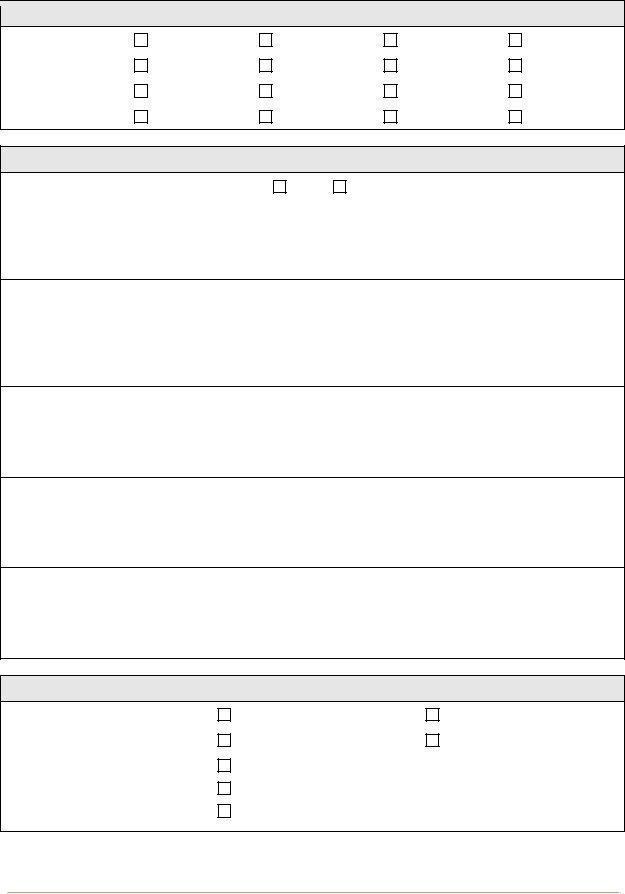If you are a wheelchair user, or know someone who is, you know that there are a lot of things to consider when choosing a wheelchair. There are many different types of wheelchairs available on the market, each with its own set of pros and cons. That's why it's important to have an assessment form to help make the best decision for your individual needs. This form will ask questions about your lifestyle, activities, and preferences in order to find the perfect wheelchair for you. So whether you're just starting your search or you've been using the same wheelchair for years, be sure to check out this Wheelchair Assessment Form!
| Question | Answer |
|---|---|
| Form Name | Wheelchair Assessment Form |
| Form Length | 7 pages |
| Fillable? | No |
| Fillable fields | 0 |
| Avg. time to fill out | 1 min 45 sec |
| Other names | wheelchair evaluation form, how to wheelchair assessment, wheelchair assessment form, wheelchair assessment form pdf |

Wheelchair/Scooter/Stroller Seating Assessment Form (CCP/Home Health Services) (7 pages)
Instructions
A current wheelchair/scooter/stroller seating assessment conducted by a physician or a physical or occupational therapist must be completed for purchase of or major modifications (including new seating systems) to a wheeled mobility system. A Qualified Rehabilitation Professional (QRP) must be present and participate in the seating assessment for all wheeled mobility systems and major modifications.
Please attach manufacturer information, descriptions, and an itemized list of retail prices of all additions that are not included in base model price.
Complete Sections
Client Information
First name:
Medicaid number:
Diagnosis:
Last name:
Date of birth:
Height:
Weight:
I. Neurological Factors
Indicate client’s muscle tone: Hypertonic Absent Fluctuating Other
Describe client’s muscle tone:
Describe active movements affected by muscle tone:
Describe passive movements affected by muscle tone:
Describe reflexes present:
Page 1 of 7 |
Effective Date_07012011/Revised Date_05312011 |

II. Postural Control
Head control: |
Good |
Fair |
Poor |
None |
Trunk control: |
Good |
Fair |
Poor |
None |
Upper extremities: |
Good |
Fair |
Poor |
None |
Lower extremities: |
Good |
Fair |
Poor |
None |
III. Medical/Surgical History And Plans:
Is there history of decubitis/skin breakdown? If yes, please explain:
Yes
No
Describe orthopedic conditions and/or range of motion limitations requiring special consideration (i.e., contractures, degree of spinal curvature, etc.):
Describe other physical limitations or concerns (i.e., respiratory):
Describe any recent or expected changes in medical/physical/functional status:
If surgery is anticipated, please indicate the procedure and expected date:
IV. Functional Assessment:
Ambulatory status: |
Nonambulatory |
With assistance |
|
Short distances only |
Community ambulatory |
|
|
|
Indicate the client’s ambulation |
Expected within 1 year |
|
potential: |
Not expected |
|
|
|
|
|
Expected in future within ___ years |
|
Page 2 of 7 |
Effective Date_07012011/Revised Date_05312011 |

IV. Functional Assessment:
Wheelchair Ambulation: |
|
|
|
|
|
Is client totally dependent upon wheelchair? |
Yes |
No |
|
||
If no, please explain: |
|
|
|
|
|
|
|
|
|
||
Indicate the client’s transfer |
|
Maximum assistance |
Moderate assistance |
||
capabilities: |
|
Minimum assistance |
Independent |
||
|
|
||||
|
|
|
|
|
|
Is the client tube fed? |
Yes |
No |
|
|
|
If yes, please explain: |
|
|
|
|
|
|
|
|
|
||
Feeding: |
|
Maximum assistance |
Moderate assistance |
||
|
|
Minimum assistance |
Independent |
||
|
|
|
|
||
Dressing: |
|
Maximum assistance |
Moderate assistance |
||
|
|
Minimum assistance |
Independent |
||
|
|
|
|||
Describe other activities performed while in wheelchair: |
|
|
|||
V. Environmental Assessment
Describe where client resides:
Is the home accessible to the wheelchair? |
Yes |
No |
|
|
|
|
|
|
|
Are ramps available in the home setting? |
Yes |
No |
|
|
|
|
|
|
|
Describe the client’s educational/vocational setting: |
|
|
|
|
|
|
|
|
|
Is the school accessible to the wheelchair? |
Yes |
No |
|
|
|
|
|
|
|
Are there ramps available in the school setting? |
Yes |
No |
|
|
|
|
|
||
If client is in school, has a school therapist been involved in the assessment? |
Yes |
No |
||
|
|
|
|
|
Name of school therapist: |
|
|
|
|
|
|
|
|
|
Name of school: |
|
|
|
|
Page 3 of 7 |
Effective Date_07012011/Revised Date_05312011 |

V. Environmental Assessment
School therapist’s telephone number:
Describe how the wheelchair will be transported:
Describe where the wheelchair will be stored (home and/or school):
Describe other types of equipment which will interface with the wheelchair:
VI. Requested Equipment:
Describe client’s current seating system, including the mobility base and the age of the seating system:
Describe why current seating system is not meeting client’s needs:
Describe the equipment requested:
Describe the medical necessity for mobility base and seating system requested:
Describe the growth potential of equipment requested in number of years:
Describe any anticipated modifications/changes to the equipment within the next three years:
VII: Signatures of Therapist/Physician and Qualified Rehabilitation Professional (QRP)
Physician/Therapist’s name: |
|
|
Physician/Therapist’s signature: |
|
|
|
|
Physician/Therapist’s title: |
|
|
Date: |
|
|
|
|
Physician/Therapist’s telephone number: ( |
) |
- |
|
Page 4 of 7 |
Effective Date_07012011/Revised Date_05312011 |

Physician/Therapist’s employer (name): |
Physician/Therapist’s address (work or employer |
|
|
address): |
|
|
|
|
QRP Name: |
NPI: |
TPI: |
|
|
|
QRP Signature: |
Date: |
|
|
|
|
|
|
|
VIII. POWER WHEELCHAIRS:
Complete if a power wheelchair is being requested
Describe the medical necessity for power vs. manual wheelchair: (Justify any accessories such as power tilt or recline)
Is client unable to operate a manual chair even when adapted? |
Yes |
No |
|
|
|
Is self propulsion possible but activity is extremely labored? |
Yes |
No |
If yes, please explain: |
|
|
Is self propulsion possible but contrary to treatment regimen? If yes, please explain:
Yes
No
How will the power wheelchair be operated (hand, chin, etc.)?
Has the client been evaluated with the proposed drive controls?
Does the client have any condition that will necessitate possible change in access or drive controls within the next five years?
Is the client physically and mentally capable of operating a power wheelchair safely and with respect to others?
Yes |
No |
Is the caregiver capable of caring for a power wheelchair and understanding how it operates?
Yes
No
How will training for the power equipment be accomplished?
Page 5 of 7 |
Effective Date_07012011/Revised Date_05312011 |

IX: Signatures of Therapist/Physician and Qualified Rehabilitation Professional (QRP)
Physician/Therapist’s name: |
|
|
Physician/Therapist’s signature: |
|
|
|
|
Physician/Therapist’s title: |
|
|
Date: |
|
|
|
|
Physician/Therapist’s telephone number: ( |
) |
- |
|
|
|
||
Physician/Therapist’s employer (name): |
Physician/Therapist’s address (work or employer address): |
||
|
|
|
|
QRP Name:
QRP Signature:
NPI: |
TPI: |
Date: |
|
Page 6 of 7 |
Effective Date_07012011/Revised Date_05312011 |

Home Health/CCP Measuring Worksheet
General Information
Client’s name: |
Date of birth: |
|
|
Client’s Medicaid number: |
Height: |
|
|
Date when measured: |
Weight: |
|
|
Measurements
|
1: |
Top of head to bottom of |
|
buttocks |
|
|
|
|
|
|
|
|
2: |
Top of shoulder to bottom of |
|
buttocks |
|
|
|
|
|
|
|
|
3: |
Arm pit to bottom of |
|
buttocks |
|
|
|
|
|
|
|
|
4: |
Elbow to bottom of buttocks |
|
|
|
|
5: |
Back of buttocks to back of |
|
knee |
|
|
|
|
|
|
|
|
6: |
Foot length |
|
|
|
|
7: |
Head width |
|
|
|
|
8: |
Shoulder width |
|
|
|
|
9: |
Arm pit to arm pit |
|
|
|
|
10: |
Hip width |
|
|
|
|
11: |
Distance to bottom of left leg |
|
(popliteal to heel) |
|
|
|
|
|
|
|
|
12: |
Distance to bottom of right |
|
leg (popliteal to heel) |
|
|
|
|
|
|
|
|
|
|
Additional Comments
Signatures of Measurer and Qualified Rehabilitation Professional (QRP)
Measurer’s Name
Measurer’s Signature: |
|
|
Date: |
Measurer’s Telephone number: ( |
) |
- |
|
QRP Name: |
|
|
|
QRP Signature:
Date:
Page 7 of 7 |
Effective Date_07012011/Revised Date_05312011 |